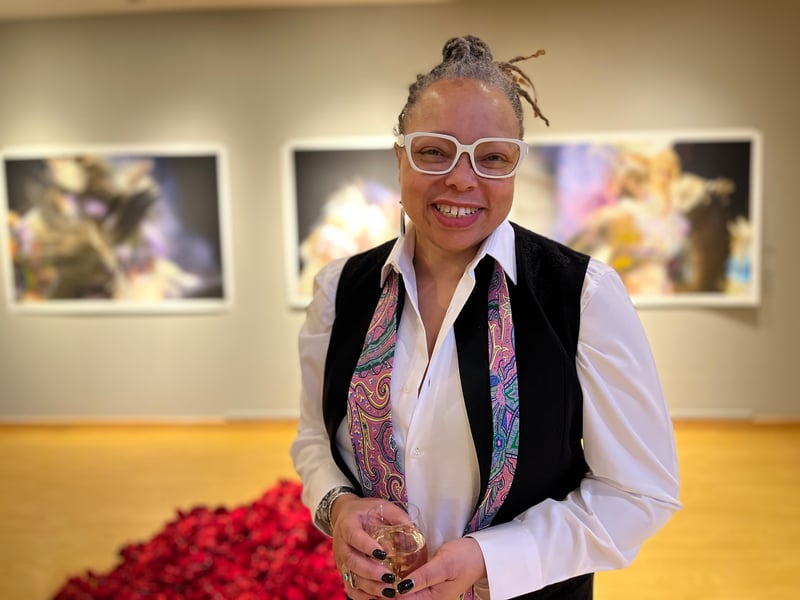
 Top photo: Kim West0n. Bottom photo: Fethi Meghelli and Weston in front of “Man with Oud” by Palestinian artist, Mohamed Saleh Khalil, during the opening reception of "Made Visible: Origins in Belonging at Creative Arts Workshop. Mindi Englart Photos.
Top photo: Kim West0n. Bottom photo: Fethi Meghelli and Weston in front of “Man with Oud” by Palestinian artist, Mohamed Saleh Khalil, during the opening reception of "Made Visible: Origins in Belonging at Creative Arts Workshop. Mindi Englart Photos.
Kim Weston embodied the theme of her latest exhibition at its opening reception at Creative Arts Workshop Friday night.
With hugs and warm welcomes, Weston invited people to “Made Visible: Origins in Belonging,” an exhibition she's curated that runs through February and into the middle of March, that will include an artists talk on Feb. 17.
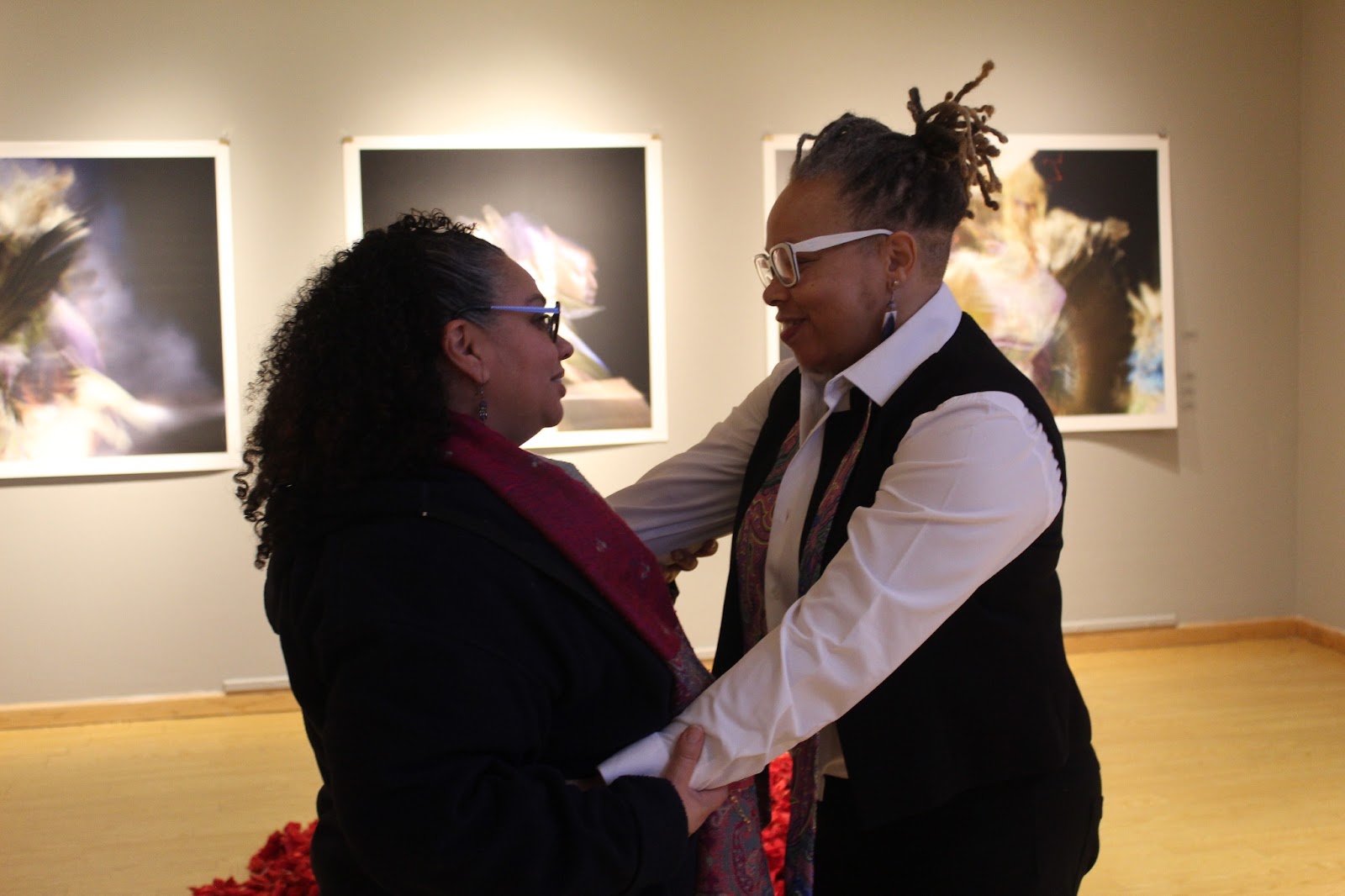
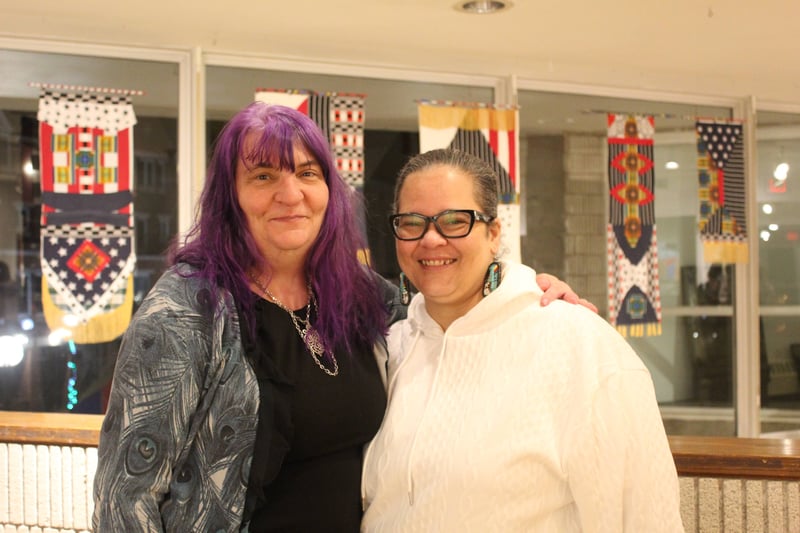 Top photo: Kim Weston welcomes Erica Sapp of Neighborhood Music School. Bottom photo: Giulia Gambale and Laura Fuller-Weston in front of work by Dennis RedMoon Darkeem.
Top photo: Kim Weston welcomes Erica Sapp of Neighborhood Music School. Bottom photo: Giulia Gambale and Laura Fuller-Weston in front of work by Dennis RedMoon Darkeem.
Energetic and stunning in a crisp white blouse tied at the waist, black pants and vest, and a colorful tie worn as a scarf, one would never know Weston was running on fumes.
“The other night she didn’t come to bed till 5:30 am. The night before that, 1:30 am,” said her wife, Laura Fuller-West0n. “Putting this together was a complete one-woman show,” she said.
Weston, who is the founder of Wabi Gallery, said the essence of the exhibition is about how Black and Brown people have more in common than they have differences.
“Black and brown bodies know how to survive,” Weston said. “But we need all people to support us when things are going wrong.”
She said the pieces in the show were more than pretty images; they're a representation of how people are thinking about their histories and asking questions about their identities.
“We’re educating ourselves and speaking out,” Weston said. “Some of us raise our fists and some of us open our arms.”
Standing at the center of the main gallery near near a large pile of thousands of red prayer bundles, filled with cherry tobacco. Weston said the piece, which she calls “15,000 flowers, 15,000 prayers,” is about the missing and murdered Indigenous women and children in the U.S. and Canada and the prayer bundles are burned for prayers for them. It’s a subject that is very close to her heart as a Native American.
“We’ve all had to deal with colonialism in different ways,” she said. “There are hurt Black and Brown bodies all over the world. We’ve had to go through having our land stolen, resources stolen.
“I want to show that we’re survivors and spread the love,” Weston added. “I want us to look at a bigger brighter horizon of Black and Brownness.
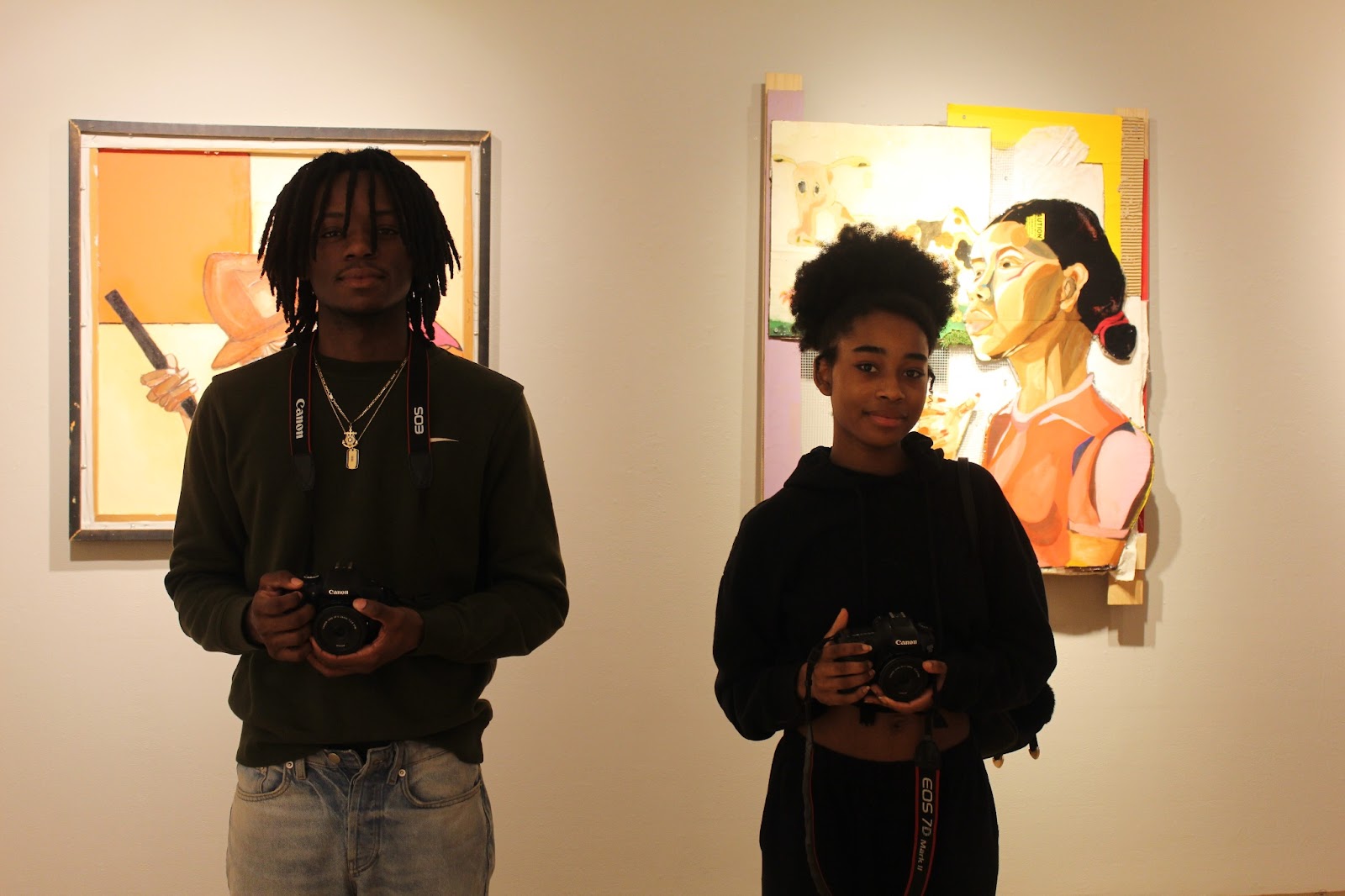
Wabi Gallery Focus Fellowship students Eric Sledge and Soleil Nelson took pictures at the show.
The show also includes work from artists Bethani Blake, Anindita Dutta, Juan Giraldo, Mohammed Al Hawajrl, Shaunda Holloway, Aisha Nailah, Dennis RedMoon, Sain’t, and Remy Sosa, who hail from diverse regions around the world.
Speaking about Mohamed Saleh Khalil’s piece, “Man with Oud,” which is on loan from the Palestinian Museum in Woodbridge, Weston said the piece represents hope.
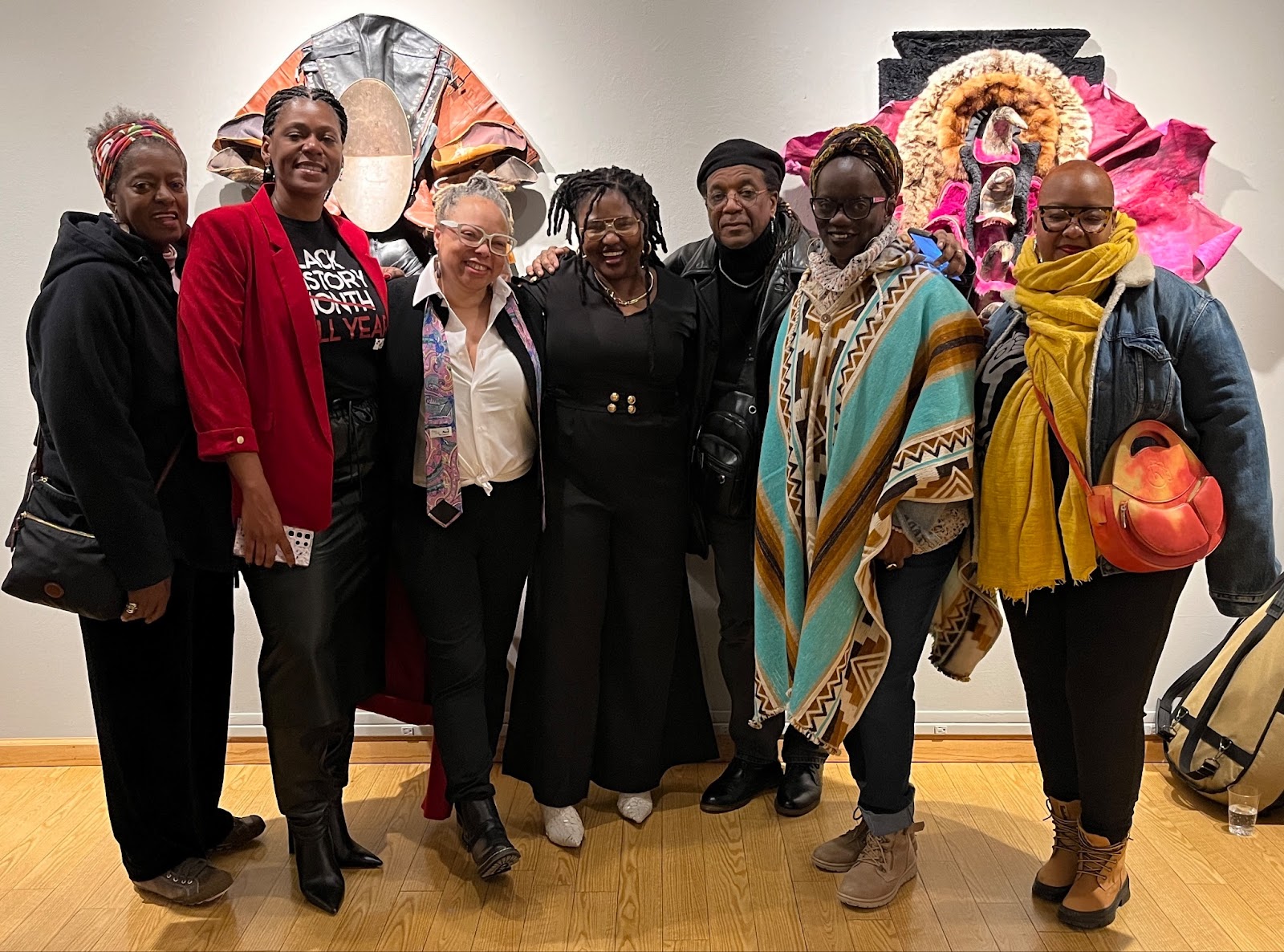
From left to right: Linda Mickens, Karimah Mickens, Kim Weston, Thabisa, Mychael Ross, Shaunda Holloway, and Aisha Nailah.
“As an artist, I’m bound by my spirit and soul to say what’s wrong, especially what’s happening to women and children in Palestine,” Weston said of why the piece is included in the exhibit.

Exhibiting artist Remy Sosa.
Remy Sosa, an artist originally from Stamford, who graduated from the School of Visual Art in New York City, showed a self portrait about depression.
“It’s about re-teaching yourself how to feel,” she said.

Thabisa sings as attendees look on.
About halfway through the event, Weston introduced musical guest Thabisa Rich, saying that her voice is one of the most powerful voices she has ever heard.
“History informs us that we’re politicized,” she said as Mychael Ross played guitar. “Come back to yourself.
“When you breathe your last breath, laying in bed, what do you want to be remembered by?”
Introducing a piece she wrote called “Imagine,” Rich invited people to close their eyes.
“Imagine a better world,” she said and began to sing.